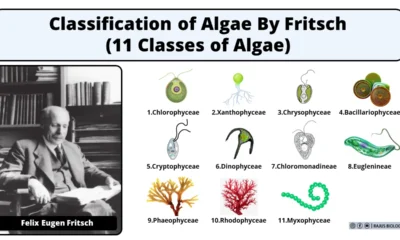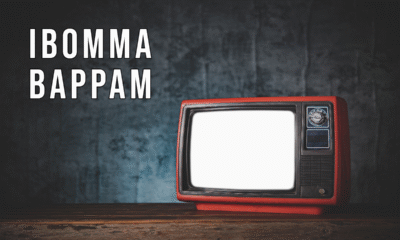Blog
Swindletrilogy com: Inside the Web of Literary Deceit

The literary world has been home to countless series that captivate audiences with thrilling plots, gripping characters, and unexpected twists. However, swindletrilogy com carved out its place in an unusual way—through a combination of viral intrigue, layered storytelling, and cryptic digital marketing. Launched without traditional promotion, it appeared mysteriously online, where curious readers stumbled upon it by word of mouth, Reddit discussions, and obscure web forums. What started as a fringe curiosity soon blossomed into a cult sensation.
The creators behind swindletrilogy com remained anonymous in the early days, letting the stories speak for themselves. This approach only deepened the mystique. Was it a social experiment, a hidden ARG, or just an unconventional literary endeavor? Fans and theorists debated fiercely, each chapter release triggering waves of online speculation.
The Core Themes Driving the Swindle Narrative
One of the most fascinating aspects of swindletrilogy com is its thematic complexity. On the surface, the trilogy follows a group of protagonists embroiled in financial conspiracies, stolen identities, and institutional corruption. But beneath that is a deeply philosophical reflection on truth, trust, and manipulation. Each book in the trilogy challenges the reader to question the information presented—not just within the story, but in their own lives.
The interplay between reality and illusion runs throughout the trilogy. Characters are often unreliable, documents forged, and facts distorted. The author seems to deliberately lead readers into traps of belief and disbelief, making the experience of reading feel like a test of discernment. This approach has led many to describe swindletrilogy com as more than fiction—it’s a mirror held up to the digital age.
You Might Also Like: Cashstark. com
Unraveling the Characters and Their Motives
Character development is one of the strongest aspects of the swindletrilogy com narrative. Unlike many thrillers where protagonists are clearly delineated as heroes or villains, this trilogy thrives in ambiguity. Each major character is painted in moral gray. For instance, Ava Lin, a financial journalist turned whistleblower, starts with idealism but ends up making ethically questionable choices. Her counterpart, Damien Rusk, a former intelligence analyst, claims to fight for justice but is haunted by past betrayals.
Their interactions are layered with mistrust, secrecy, and a growing realization that they are pawns in a much larger game. The trilogy’s antagonist isn’t a single person but an evolving network of systems—corporate, governmental, and informational—that manipulate truth for power. These nuanced portrayals resonate with modern audiences skeptical of black-and-white narratives.
Swindletrilogy com and the New Age of Interactive Fiction
What makes swindletrilogy com truly revolutionary isn’t just its storytelling—it’s the platform itself. Unlike traditional books, the trilogy integrates multimedia elements and interactive features. Readers don’t just read chapters; they decrypt files, listen to voice notes, and solve ciphers embedded within the website. This gamified format engages users on multiple levels, requiring both analytical thinking and emotional investment.
Some sections of the site even allow readers to influence character decisions in minor ways, hinting at alternate storylines or parallel realities. The line between reader and participant blurs, transforming the act of reading into a collaborative exploration. As such, swindletrilogy com isn’t just literature—it’s a digital experience curated for the intellectually curious and the conspiracy-minded.
How the Trilogy Reflects Societal Fears and Realities
Many readers have drawn parallels between the events in swindletrilogy com and real-world occurrences. The narrative deals with data privacy breaches, financial scams, whistleblower persecution, and systemic surveillance—all echoing contemporary global anxieties. This synchronicity isn’t accidental. The trilogy was designed to hold a mirror to the modern world, encouraging readers to question everything from news headlines to online terms of service.
There’s also a recurring theme of isolation in the digital age. Characters often find themselves alienated, distrusting even their closest allies. Their efforts to expose the truth frequently backfire, leading to personal loss. This exploration of the high personal cost of truth-seeking resonates deeply in an era where transparency often comes with sacrifice.
The Cryptographic Allure of the Narrative
A unique element embedded in swindletrilogy com is its use of cryptography. Passages throughout the story are encoded, some requiring real-world knowledge of ciphers like Caesar shifts, Vigenère codes, and hexadecimal layers. This feature adds an intellectual challenge, turning the trilogy into a kind of literary puzzle box. Forums have sprung up dedicated to decoding these messages, with users pooling resources and theories to uncover hidden layers of the plot.
These codes are not mere gimmicks. They often unlock crucial narrative details, background information, or alternate interpretations of events. Some messages are red herrings, designed to mislead, while others are game-changers. This interactive dynamic gives readers the sense of being part of an underground movement rather than passive consumers.
Reader Communities and Their Role in the Phenomenon
The growth of swindletrilogy com owes much to its passionate online communities. Fans have created podcasts, detailed timeline breakdowns, character studies, and alternative endings. Subreddits dedicated to the trilogy contain thousands of posts dissecting every phrase, symbol, and update. This crowd-sourced engagement extends the life of the narrative, turning it into a living organism that continues to evolve beyond the author’s input.
There are even annual “Swindle Cons” hosted online where fans gather to speculate on the meaning of unresolved clues and debate possible sequels. The camaraderie and debate among fans create a participatory culture that few literary works achieve, demonstrating the power of community-driven content in the digital age.
Criticism and Controversy Surrounding the Site
No cultural phenomenon is without its critics, and swindletrilogy com is no exception. Some literary critics have dismissed it as gimmicky, arguing that its interactive format distracts from storytelling fundamentals. Others have voiced ethical concerns about how closely the narrative mirrors real-world whistleblower stories, suggesting it exploits genuine trauma for entertainment.
Additionally, the anonymous nature of the creators has raised questions about accountability. At one point, the site went dark for several weeks without explanation, prompting panic and speculation. Some believed it was part of the story, while others suspected a legal dispute or hacker attack. The ambiguity only added to the mystique, but also highlighted the risks of consuming media without clear authorship or institutional backing.
The Cultural Footprint of Swindletrilogy com
Despite its polarizing reception, few can deny the cultural impact of swindletrilogy com. It has inspired academic essays, think pieces, and even art installations. University courses have used it to explore postmodern narrative structures and digital ethics. Some educators see it as a model for blending education with entertainment, especially in teaching critical thinking and media literacy.
It has also influenced other creators in the digital storytelling space. Numerous web-based fiction series have adopted similar formats, from interactive horror tales to branching romance plots. While not all achieve the same level of success, they collectively signify a shift in how stories are being told and consumed in the internet age.
The Future of the Swindle Universe
Speculation is rife about what comes next for swindletrilogy com. The final installment of the trilogy left room for further exploration, with several subplots unresolved. Fans have long called for a prequel detailing the origin of the shadow organization known as The Signal, which orchestrates much of the trilogy’s turmoil. Others hope for a spinoff focusing on Ava Lin’s life post-exposure.
Whether or not the original creators return to expand the universe remains uncertain. However, fan fiction and AI-generated continuations have already begun to fill the void. This decentralized authorship underscores how swindletrilogy com has transcended its original format to become a collaborative mythos shaped by its audience.
Why Swindletrilogy com Matters Today
In a time when misinformation and digital manipulation run rampant, the messages within swindletrilogy com hit close to home. It is not simply a story about deception—it is a commentary on how truth itself is constructed and contested in modern society. The trilogy serves as both a cautionary tale and an invitation to remain vigilant, skeptical, and engaged.
As readers navigate the cryptic world of the trilogy, they confront the very mechanisms of power and control that shape our reality. This metatextual quality makes the work feel not just timely but necessary. It challenges the boundaries of fiction, inviting us to examine the lies we live with every day.
Conclusion: A Legacy Forged in Shadows
Ultimately, swindletrilogy com stands as a testament to the power of unconventional storytelling. It weaves together narrative, technology, and community in a way that few literary projects have managed. Whether viewed as a brilliant innovation or an overhyped puzzle, it undeniably pushed the boundaries of what digital literature can be.
Its impact will likely ripple outward for years to come, influencing how writers, readers, and technologists approach narrative. In a world desperate for authenticity but flooded with deception, swindletrilogy com offers a haunting, unforgettable journey into the heart of untruth. And in doing so, it reminds us that sometimes, the biggest swindle of all is the one we willingly believe.

 Blog6 months ago
Blog6 months ago[PPT] Human Reproduction Class 12 Notes

 Blog6 months ago
Blog6 months agoCell The Unit of Life Complete Notes | Class 11 & NEET Free Notes
- Blog6 months ago
Contribution of Indian Phycologists (4 Famous Algologist)
- Blog6 months ago
PG TRB Botany Study Material PDF Free Download

 Blog6 months ago
Blog6 months ago[PPT] The living world Class 11 Notes

 Blog6 months ago
Blog6 months agoJulus General Characteristics | Free Biology Notes

 Blog6 months ago
Blog6 months agoClassification of Algae By Fritsch (11 Classes of Algae)

 Entertainment6 months ago
Entertainment6 months agoIbomma Bappam: Redefines Telugu Streaming Trend














